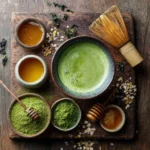Getting Started with Matcha Hot Tea Recipes
What is Matcha Hot Tea?
Matcha Hot Tea Recipes are one of my favorite rituals here at EatBrightly. In my Asheville kitchen, I love whisking this vibrant Japanese green tea powder into a warm, frothy cup that fuels both body and mind. Whether you’re making a classic ceremonial blend or a cozy matcha latte, these recipes are a beautiful way to bring calm energy to your day. Matcha hot tea is one of my favorite kitchen rituals. This vibrant green tea powder isn’t just another trendy drink, it’s a centuries-old Japanese tradition that offers a calm, focused energy unlike any other beverage.
Matcha is made from shade-grown tea leaves, carefully stone-ground into a fine, bright green powder. Unlike steeped green tea, you consume the entire leaf, which means you’re sipping up a concentrated dose of antioxidants, amino acids, and earthy flavor in every cup.
Whether you’re enjoying a quiet morning in Asheville like I do, or you’re in the middle of a busy workday, matcha hot tea is a moment of peace and intention you can sip slowly.
Brief History of Matcha in Japan and Worldwide Popularity
Matcha’s roots stretch back to ancient China, but it was in Japan especially during the 12th century Zen Buddhist rituals, that matcha took on its ceremonial form. Monks valued it for its ability to promote calm focus during meditation.
Fast-forward to today, and matcha has moved beyond the tea house. You’ll find it in cafés, wellness retreats, and home kitchens (like mine!) all over the world. What hasn’t changed is its meditative preparation and incredible health benefits. In this guide, I’ll share everything from traditional recipes to creative matcha lattes so you can create your own mindful tea moments at home.
Jump To
Table of Contents
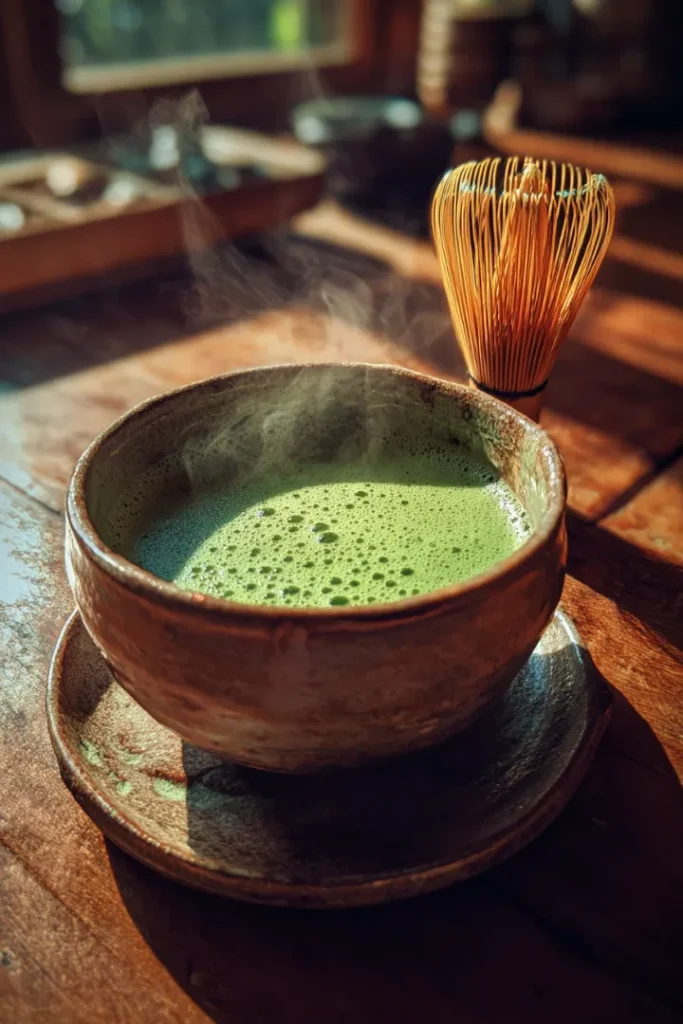
How to Make Matcha Hot Tea
Traditional Japanese Method for Preparing Matcha Hot Tea
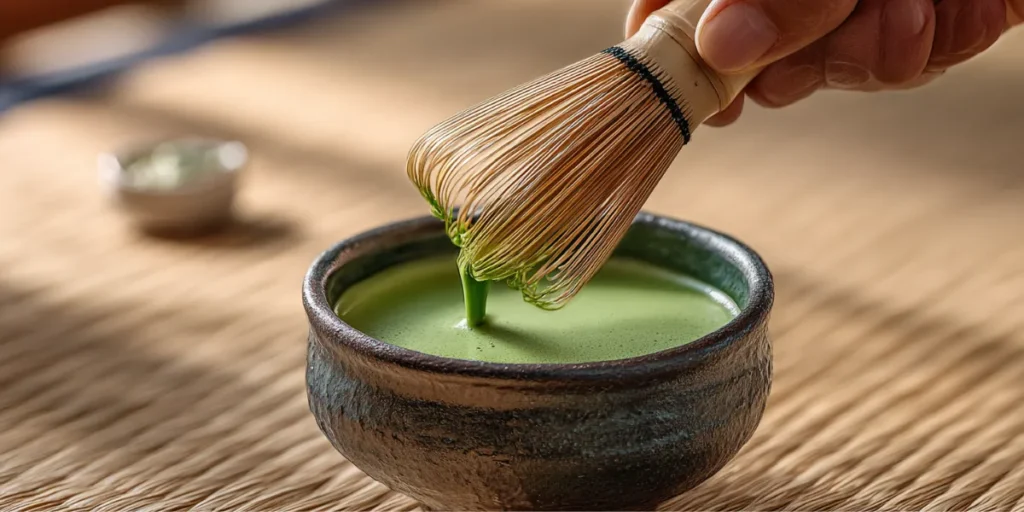
In my Asheville kitchen, I like to honor matcha’s roots by making it the traditional way slow, intentional, and almost meditative. This method uses just two tools: a bamboo whisk (chasen) and a matcha bowl (chawan).
Here’s how to do it:
Ingredients:
- 1 teaspoon ceremonial-grade matcha powder
- 2–3 ounces water (about 175°F / 80°C not boiling)
Steps:
- Sift the matcha powder into your bowl to remove clumps. This makes the tea smoother and creamier.
- Add hot water not boiling! Boiling water can make the matcha taste bitter.
- Whisk in a “W” motion using your chasen until a smooth, frothy layer forms on top. This step feels like magic watch the bright green foam come alive.
- Sip immediately from the bowl and enjoy the earthy, slightly sweet flavor.
This ritual isn’t about rushing; it’s about pausing, breathing, and connecting with the moment just like the monks who first drank it centuries ago.
Modern Quick Methods for Matcha Hot Tea at Home
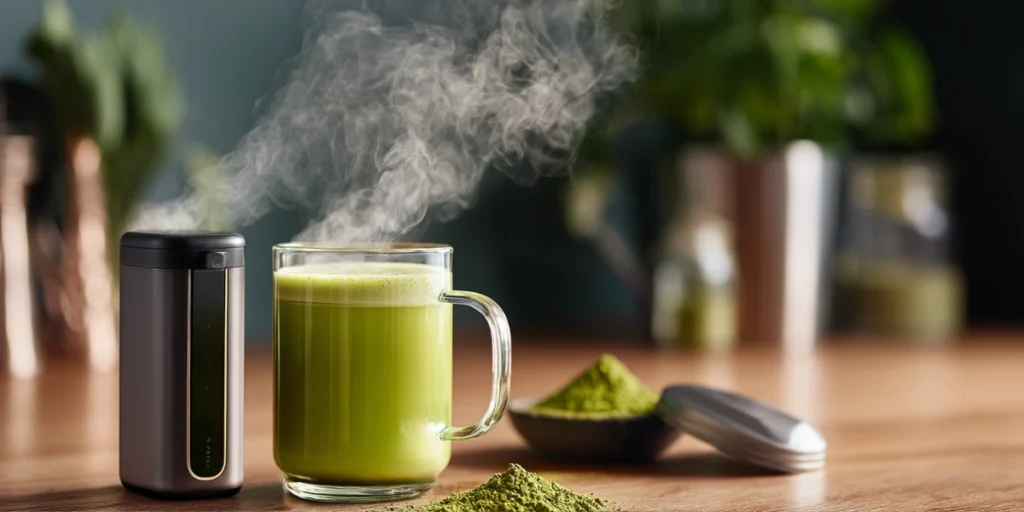
Now, I get it life can get busy. If you don’t have a bamboo whisk or a ceremonial bowl, there’s still an easy way to enjoy matcha hot tea that’s just as delicious.
Ingredients:
- 1 teaspoon matcha powder (culinary grade works fine here)
- 6–8 ounces water (175°F / 80°C)
Steps:
- Place matcha in a mug or small blender bottle.
- Add a splash of warm water and whisk with a handheld frother or shake vigorously until smooth.
- Pour in the rest of the hot water and blend until you see a light foam.
- Optional: Add a touch of honey, maple syrup, or steamed milk for a cozy twist.
This version takes less than two minutes and still gives you all the vibrant flavor and antioxidant power matcha is known for.
Can You Drink Hot Matcha Tea?
Benefits of Drinking Hot Matcha Tea
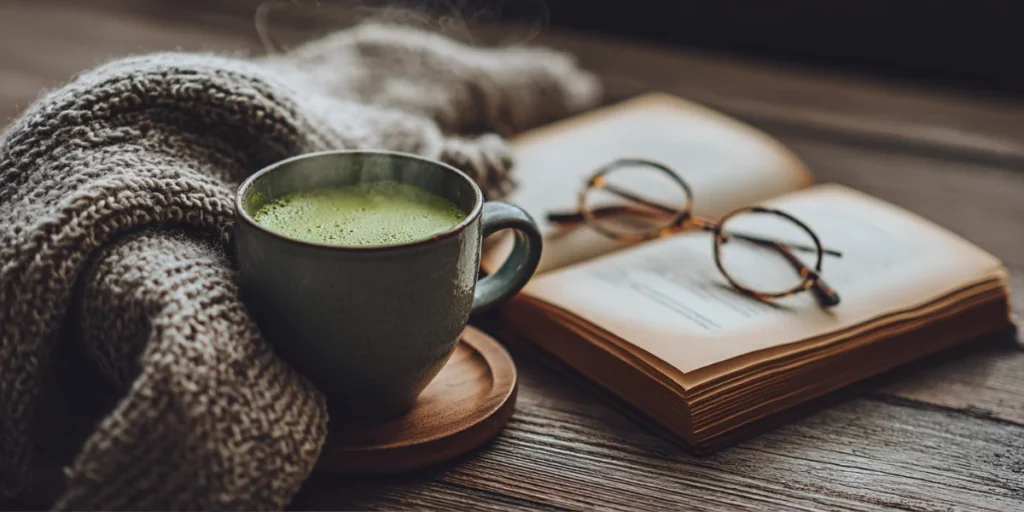
Absolutely, you can drink hot matcha tea, and in fact, it’s one of the best ways to enjoy its rich flavor and health benefits. Hot matcha isn’t just a comforting drink on a chilly Asheville morning it’s also packed with compounds that support energy, focus, and overall wellness.
Here’s why sipping it warm can be so beneficial:
- Gentle Energy Boost – Thanks to matcha’s unique blend of caffeine and L-theanine, it provides a calm, sustained energy without the jitters often linked to coffee.
- Rich in Antioxidants – Matcha contains high levels of catechins, especially EGCG, which supports cellular health.
- Supports Mental Focus – The warm preparation makes the tea easier to digest while enhancing its calming effect on the mind.
Hot matcha tea isn’t just about what it does for your body it’s also about the ritual. That gentle steam rising from your cup can be the perfect start (or pause) to your day.
Best Times to Drink Hot Matcha Tea for Maximum Health Benefits
I’ve learned over the years that timing matters. While matcha can be enjoyed any time of day, here are my favorite windows for sipping it hot:
- Morning Focus – Replacing your morning coffee with a cup of hot matcha provides steady energy without an afternoon crash.
- Midday Reset – Around 1–3 PM, a cup of matcha can refresh your mind without disrupting sleep later.
- Pre-Workout – The combination of caffeine and antioxidants can enhance endurance and performance.
One tip: avoid drinking hot matcha tea late in the evening. Even though it’s gentler than coffee, the caffeine might still interfere with restful sleep.
According to AARP, matcha’s rich concentration of antioxidants, particularly polyphenols like EGCG, may offer a range of health benefits from enhancing brain and gut health to reducing stress and supporting a stronger immune system
Making Matcha Tea with Hot Water
Ideal Water Temperature for Matcha
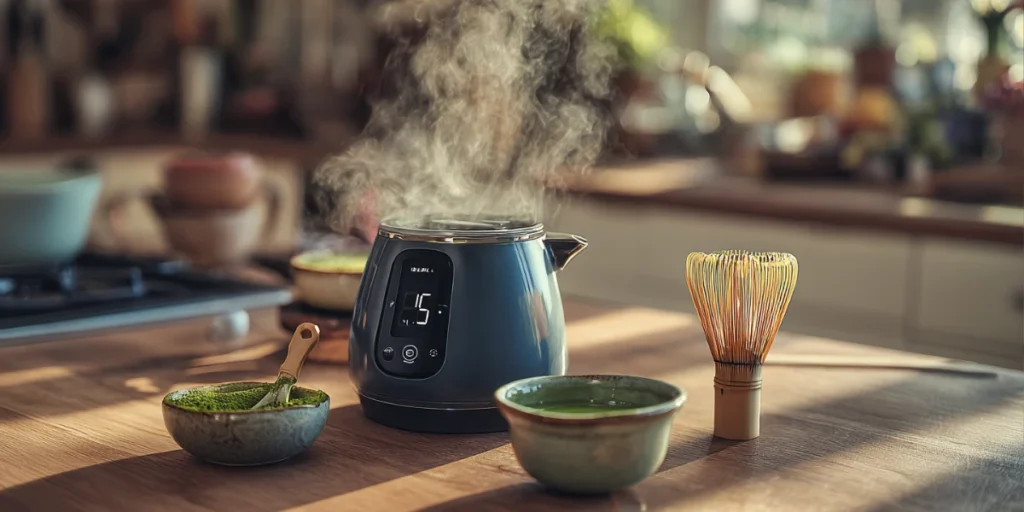
Here’s one of the first lessons I learned when I started making Japanese green tea powder drinks at home: temperature is everything.
If the water is too hot, matcha can turn bitter. If it’s too cool, the tea won’t fully dissolve and the flavor will fall flat.
The sweet spot?
- Ideal Temperature: Around 175°F (80°C)
- Quick Trick: Heat water until it just starts to steam, then let it sit for about 30 seconds before pouring it over your matcha.
This simple step helps bring out matcha’s naturally sweet, grassy notes, while preserving all those antioxidant benefits of matcha we love.
Why Avoid Boiling Water in Matcha Preparation
I can’t stress this enough boiling water is matcha’s enemy. The high heat can scorch the delicate powder, leading to a strong, almost burnt taste. But beyond flavor, it can also reduce some of the tea’s beneficial compounds.
Think of ceremonial matcha like fresh herbs: just as you wouldn’t toss fresh basil into a roaring boil, you don’t want to drown your matcha in boiling water.
My kitchen rule: Treat matcha gently and it will reward you with its best flavor and health benefits.
Do You Add Milk to Hot Matcha?
Matcha Latte: Combining Matcha and Milk
If you’re wondering whether you can add milk to matcha hot tea, the answer is a big, creamy yes! While traditional ceremonial matcha is made with just water, the modern matcha latte is a cozy spin that blends the earthy depth of matcha with the rich comfort of steamed milk.
For more refreshing options, try my creamy Iced Matcha Latte for warm days or a nutrient-packed Matcha Smoothie when you need an energizing boost.
I often sip on a warm matcha latte in the morning here in Asheville when I want something smooth, soothing, and just a little indulgent but still aligned with my whole-food, plant-forward approach.
Here’s how to make it:
| Ingredients | Instructions |
|---|---|
| 1 tsp matcha powder | 1. Sift matcha into a mug. |
| 2 oz hot water (175°F / 80°C) | 2. Whisk with a chasen or frother until smooth. |
| 6 oz milk (dairy or non-dairy) | 3. Steam or warm milk to your desired texture. |
| 1–2 tsp maple syrup or honey (optional) | 4. Stir milk into the matcha, sweeten if desired. |
You’ll end up with a velvety, creamy matcha drink that feels like a hug in a cup. The earthy matcha and subtly sweet milk complement each other beautifully.
If you’re exploring more ways to enjoy Japanese green tea powder, check out my full guide on Matcha Recipes: 7 Delicious Drinks & Desserts You Can Make at Home.
Non-Dairy Alternatives for Creamy Matcha Hot Tea
I’m a big fan of plant-based matcha recipes, so if you’re like me and prefer non-dairy options, try these combos:
- Oat milk: Super creamy and slightly sweet my go-to!
- Almond milk: Lighter in texture, with a subtle nuttiness.
- Coconut milk: Rich and tropical great for spiced or dessert-style matcha lattes.
- Soy milk: Higher in protein and makes a great foam.
Tip: Warm your plant milk on the stove or in a frother before mixing. It makes a world of difference in the final texture.
Is Matcha Healthier than Coffee?
Nutritional Benefits of Matcha vs Coffee
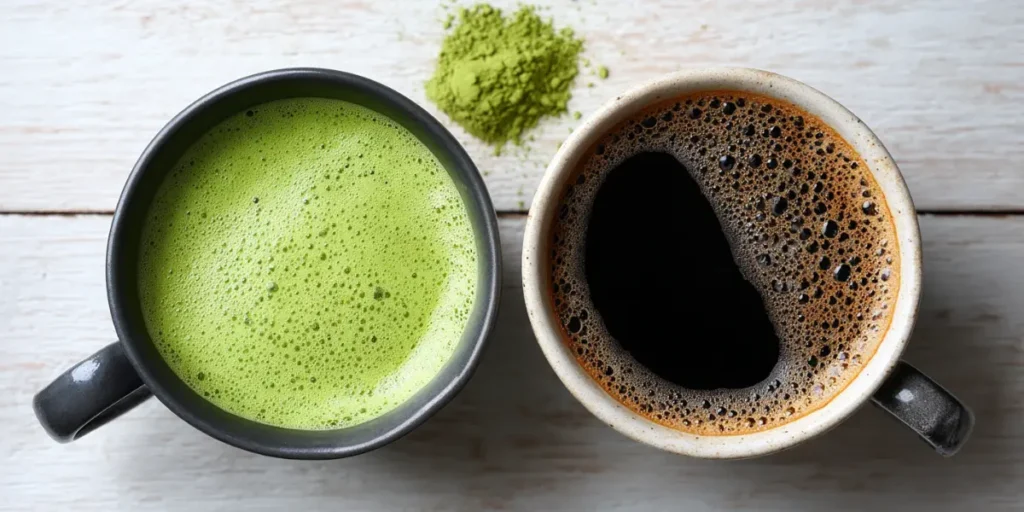
Ah, the ultimate showdown matcha vs coffee. I’ve been asked this question countless times during my virtual cooking classes and chats with wellness clients. So, let’s break it down.
While both drinks offer benefits, matcha wins in one key area: nutrient density. Since you’re consuming the whole leaf when you drink Japanese green tea powder, you’re getting far more antioxidants, chlorophyll, and fiber than you would from coffee, which is simply steeped and discarded.
Let’s look at how they stack up:
| Category | Matcha (1 tsp) | Coffee (1 cup) |
|---|---|---|
| Caffeine | ~30–70 mg (slow-release) | ~95–120 mg (quick spike) |
| Antioxidants (EGCG) | Very high | Moderate |
| L-Theanine (calm focus) | Yes | No |
| Acidity | Low (gentler on stomach) | High (can cause jitters, reflux) |
| Preparation | Whisked whole leaf | Brewed, filtered |
| Energy Crash Risk | Low | High |
In short, matcha hot tea provides a more balanced, sustained energy that supports both focus and calm. It’s become my morning go-to, especially when I want that “plugged in but peaceful” vibe without the 3 PM crash.
Energy Boost and Focus: Comparing Caffeine in Matcha and Coffee
This is one of my favorite topics because it’s where ceremonial matcha really shines. The combo of caffeine + L-theanine in matcha works synergistically. Caffeine keeps you alert, while L-theanine smooths out the edges, reducing anxiety and supporting focus.
Coffee hits fast and hard but can also make you feel jittery, wired, or even anxious. For me, switching to matcha hot tea helped stabilize my energy levels while supporting my adrenal health (especially after that health scare I mentioned earlier in my story).
So if you’re looking for clarity, calm, and a clean energy source matcha might just be your new best friend.
Creative Matcha Hot Tea Recipes
Classic Ceremonial Matcha Hot Tea Recipe
Sometimes, there’s nothing better than keeping it simple and traditional. This recipe honors the roots of Japanese green tea powder and lets the flavor shine.
Ingredients:
- 1 tsp ceremonial-grade matcha powder
- 2–3 oz hot water (175°F / 80°C)
Steps:
- Sift matcha powder into a chawan (or small bowl).
- Add hot water gently.
- Whisk in a “W” motion until frothy.
- Sip slowly and enjoy the earthy, sweet aroma.
This is my go-to for quiet Asheville mornings before the world wakes up.
Vanilla Honey Matcha Latte Recipe
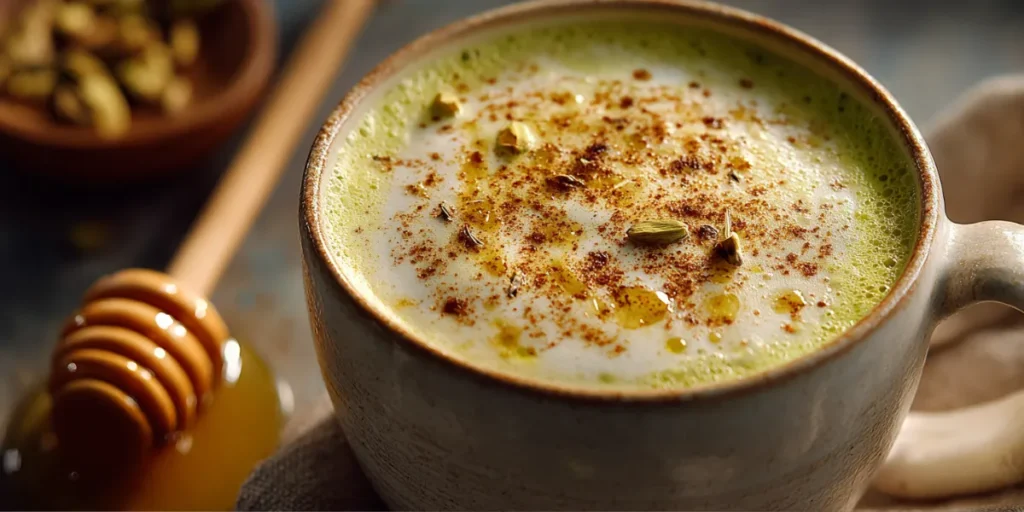
This is a soft, creamy twist on creamy matcha drinks perfect for when you want something indulgent but still nutrient-packed.
Ingredients:
- 1 tsp matcha powder
- 2 oz hot water
- 6 oz steamed milk (oat or almond milk works beautifully)
- 1 tsp raw honey (or maple syrup)
- ½ tsp vanilla extract
Steps:
- Sift matcha powder into a mug.
- Add hot water and whisk until smooth.
- Steam milk with vanilla, then pour into matcha.
- Stir in honey and enjoy.
Tip: The vanilla rounds out the earthy matcha beautifully while the honey adds just the right amount of sweetness.
Spiced Cinnamon Matcha Hot Tea Recipe
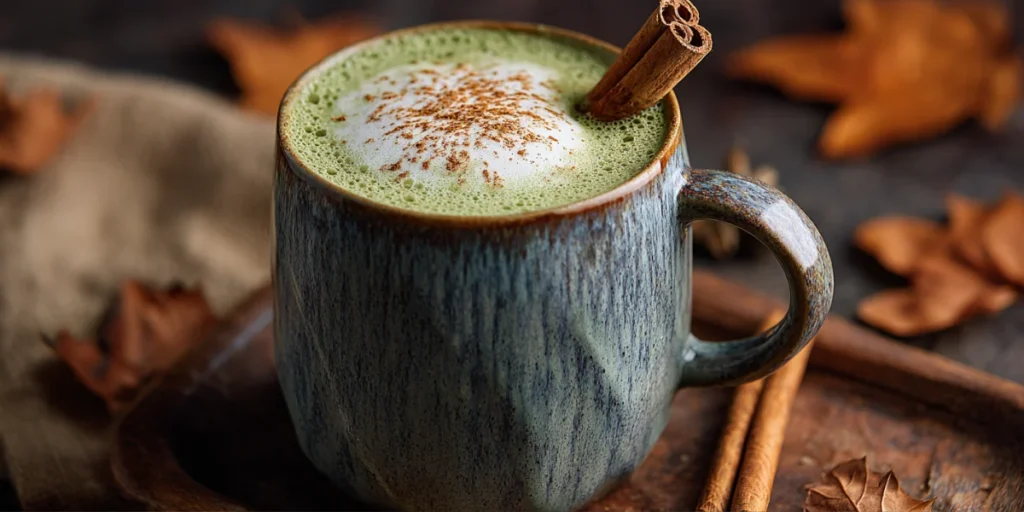
This one’s a favorite when the weather cools down it’s like autumn in a cup.
Ingredients:
- 1 tsp matcha powder
- 2 oz hot water
- 6 oz oat milk (for creaminess)
- ¼ tsp ground cinnamon
- Pinch of nutmeg
- Maple syrup to taste
Steps:
- Sift matcha powder into a mug and whisk with hot water.
- Steam oat milk with cinnamon and nutmeg.
- Pour spiced milk into matcha and sweeten with maple syrup.
The spices play so well with the earthy matcha it’s a cozy cup I often enjoy with Luna curled up by my feet.
FAQs About Matcha Hot Tea
How to make matcha hot tea?
To make matcha hot tea, sift 1 teaspoon of matcha powder into a bowl or mug. Add 2–3 ounces of hot water (not boiling about 175°F), then whisk until smooth and frothy. You can enjoy it as-is or add steamed milk and a natural sweetener for a creamier version. It’s a simple ritual that turns a regular morning into something soothing and intentional.
Can you drink hot matcha tea?
Yes, you can absolutely drink hot matcha tea. In fact, it’s one of the best ways to enjoy the full flavor and nutritional benefits of matcha. The warmth enhances its calming effects and helps release the delicate grassy, umami flavors found in ceremonial matcha.
Can I make matcha tea with hot water?
Yes, but the water must not be boiling. The ideal temperature for matcha is around 175°F (80°C). Using boiling water can scorch the powder, making your tea bitter and dull. Gently heated water preserves the flavor and nutrients that make Japanese green tea powder so special.
Do you add milk to hot matcha?
You can, and it’s delicious. Adding milk turns traditional matcha into a creamy matcha latte. You can use dairy milk or non-dairy alternatives like oat, almond, or soy milk. For a sweeter touch, try adding a splash of vanilla or a drizzle of honey.
s matcha healthier than coffee?
In many ways, yes. Matcha provides antioxidants, calming L-theanine, and a more stable energy boost than coffee. Unlike coffee, which can cause crashes and jitteriness, matcha hot tea supports focus and calm without the rollercoaster. It’s also lower in acidity, which can be gentler on digestion.
Why not boiling water with matcha tea?
Because boiling water damages matcha’s delicate compounds. It reduces antioxidant content and brings out bitterness. Matcha shines when prepared with warm not boiling water. Treat it gently and it rewards you with vibrant flavor and powerful wellness benefits.
Savor the Last Sip: Matcha Hot Tea Recipes Made for You
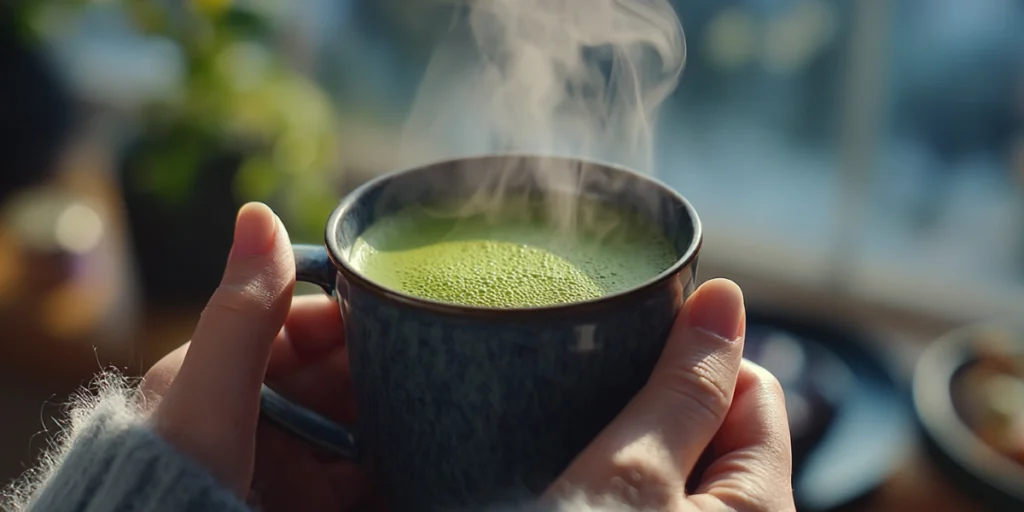
Final Thoughts on Enjoying Matcha Hot Tea Recipes
Making matcha hot tea is so much more than whisking green powder into water, it’s an invitation to pause, breathe, and nourish your body. Whether you prefer it in its traditional ceremonial form or as a creamy oat milk latte, matcha is a simple way to bring a touch of beauty and wellness into your daily life.
I’ve found that the act of making matcha can be as restorative as drinking it. It’s a ritual that encourages presence just you, the warm cup, and that vibrant green swirl.
Encouragement to Experiment with Matcha Creations
Don’t be afraid to play with your tea. Try different milk alternatives, add a pinch of cinnamon, or whisk in vanilla for something new. Each cup is an opportunity to explore and enjoy the natural versatility of Japanese green tea powder.
Whether you’re sipping on a quiet morning in Asheville or brewing a latte before work, I hope these recipes inspire you to make matcha a part of your wellness story.
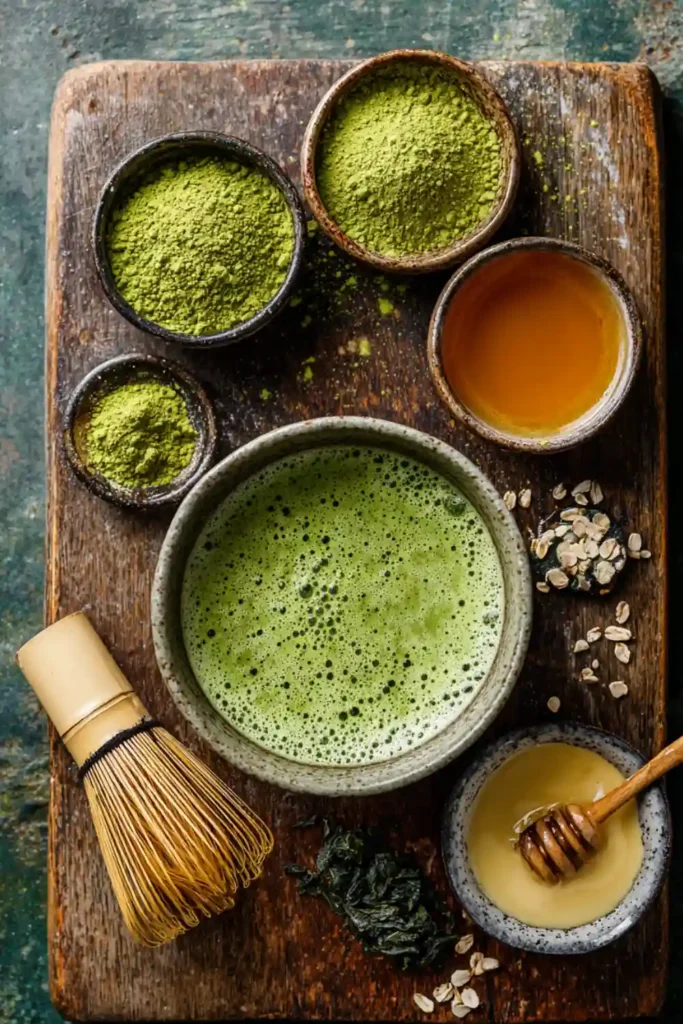
Creamy Matcha Hot Tea Latte Recipes
A soothing collection of traditional and modern Matcha Hot Tea recipes, from classic ceremonial blends to creamy lattes, perfect for calm energy and mindful moments.
- Prep Time: 5 minutes
- Cook Time: 0 minutes
- Total Time: 5 minutes
- Yield: 1 serving 1x
- Category: Beverage
- Method: Whisked
- Cuisine: Japanese
Ingredients
- 1 tsp ceremonial-grade matcha powder
- 2–3 oz hot water (175°F / 80°C)
- Optional: 6 oz milk (dairy or non-dairy alternatives like oat, almond, or soy)
- Optional: 1–2 tsp honey or maple syrup
- Optional: spices like cinnamon or nutmeg for variations
Instructions
- Sift matcha powder into a bowl or mug to remove clumps.
- Heat water to about 175°F (80°C), avoiding boiling.
- Add hot water to matcha and whisk in a ‘W’ motion until smooth and frothy.
- For lattes, steam milk and add to whisked matcha.
- Sweeten to taste with honey or maple syrup.
- Optional: Add spices like cinnamon or nutmeg for flavor variations.
Notes
Use ceremonial-grade matcha for the best flavor and health benefits. Avoid boiling water to preserve antioxidants and prevent bitterness.
Nutrition
- Serving Size: 1 cup
- Calories: 10
- Sugar: 0g
- Sodium: 0mg
- Fat: 0g
- Saturated Fat: 0g
- Unsaturated Fat: 0g
- Trans Fat: 0g
- Carbohydrates: 1g
- Fiber: 0g
- Protein: 1g
- Cholesterol: 0mg
Keywords: matcha hot tea recipe, hot matcha tea, ceremonial matcha tea recipe, matcha tea latte recipe, vanilla honey matcha latte, spiced cinnamon matcha latte, creamy matcha hot tea, dairy free matcha hot tea, vegan matcha latte, matcha hot tea with oat milk,


